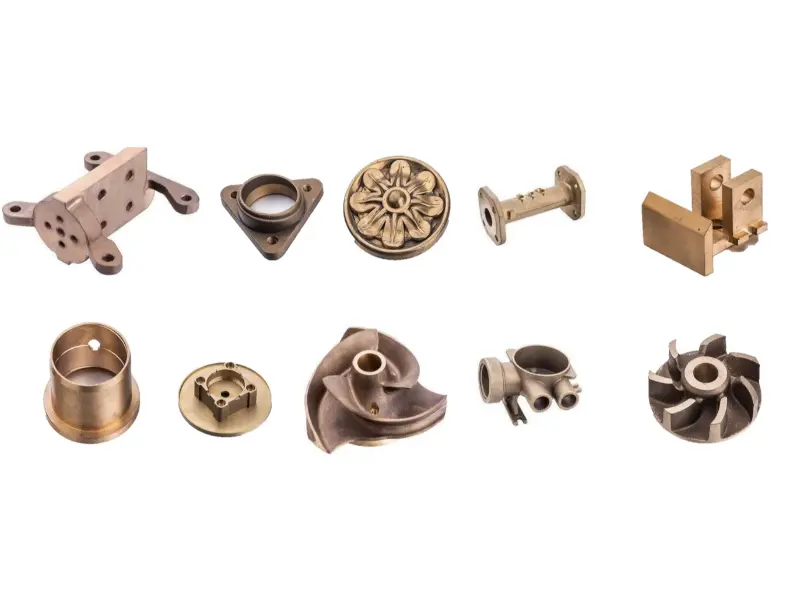Is Gravity Die Casting Expensive? | Cost Analysis & Benefits of Gravity Casting
Is gravity die casting expensive? This article explores the key cost factors, benefits, and material considerations that affect pricing. Learn whether gravity die casting is a cost-effective solution for your manufacturing needs while ensuring high-quality, durable parts.
Understanding Gravity Die Casting Costs
The cost of gravity die casting can vary widely depending on several factors. Understanding these variables can help determine if gravity die casting is the right choice for your production needs.
1. Tooling and Mold Costs
One of the primary costs in gravity die casting is the production of reusable molds, typically made from steel or iron:
- Initial Investment: The creation of permanent molds can be expensive, especially for complex designs. However, since these molds are reusable, they reduce per-part costs over larger production runs.
- Cost Over Production Volume: As production volume increases, the initial tooling costs are spread across more units, making the process more economical for medium to large-scale production.
2. Material Costs
The choice of metal alloy used in gravity die casting affects overall expenses:
- Common Alloys: Materials like aluminum and zinc are commonly used in gravity die casting for their cost-effectiveness, lightweight properties, and strength.
- Material Waste: Gravity casting typically produces less waste than other methods, which can result in lower material costs over time.
3. Labor and Production Costs
Gravity die casting requires skilled labor for mold setup, monitoring, and quality control:
- Reduced Machining Needs: Components produced through gravity die casting often have smoother finishes and require less post-production machining, saving on labor costs.
- Batch Production: The method is suitable for producing medium to high volumes, allowing for batch production that lowers costs per unit.
4. Energy Costs
Compared to pressure die casting, gravity die casting uses less energy:
- Lower Energy Consumption: Since gravity is used instead of high-pressure equipment to pour metal, the process consumes less energy, reducing operational costs.
- Eco-Friendly Process: The lower energy requirements make gravity die casting a more environmentally friendly and cost-effective option over time.
5. Maintenance and Mold Longevity
Gravity die casting molds tend to have a longer lifespan, which can contribute to overall cost savings:
- Durability of Molds: Permanent molds used in gravity casting can be reused many times, offering better value for long-term production.
- Lower Maintenance Costs: Unlike some casting methods, the durable molds in gravity die casting typically require less frequent replacement or repair, reducing maintenance expenses.
Is Gravity Die Casting Expensive for Different Production Scales?
The overall cost-effectiveness of gravity die casting depends on production volume:
- Low Volume Production: For small quantities, the initial tooling cost may make gravity die casting appear more expensive compared to sand casting.
- Medium to High Volume Production: For larger production runs, gravity die casting becomes more economical due to reduced per-part costs, minimal waste, and reusable molds.
Advantages of Gravity Die Casting That Offset Costs
While there may be some initial investment, gravity die casting offers benefits that help offset expenses over time:
1. Consistent Quality and Precision
- Gravity die casting provides high precision and repeatability, reducing the need for costly secondary operations.
2. Enhanced Mechanical Properties
- Components produced through gravity casting typically have improved strength and durability, leading to fewer failures and replacements, which saves costs over the long term.
3. Versatility with Material Selection
- The process supports various alloys, allowing manufacturers to choose cost-effective materials that meet specific project needs.
Conclusion: Is Gravity Die Casting Worth the Investment?
Gravity die casting can be more expensive upfront due to tooling costs but is generally cost-effective for medium to high-volume production. The reduced material waste, lower energy usage, and longer-lasting molds contribute to savings over time. For manufacturers seeking durable, high-quality parts, gravity die casting is a worthwhile investment, particularly for large production runs where per-unit costs become lower.

